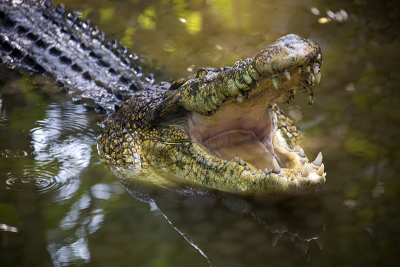
Crocodiles count among the most ancient species of vertebrates and have barely changed over the space of more than 200 million years. They constitute a link between dinosaurs and bird species today. “Analyses of crocodile brains thus provide deep insights into the evolution of the nervous system in mammals and may help us understand at which point certain brain structures and behaviours associated therewith were formed”, explains Felix Ströckens of the Ruhr-Universitaet Bochum, Germany. A team of researchers from the Iran, South Africa, France and Germany have studied Nile crocodiles using functional magnetic resonance imaging (fMRI) to ascertain the way sensory information is processed in their brain. “In the first step, we had to overcome a number of technical obstacles”, says research team member Mehdi Behroozi. “For example, we had to adjust the scanner to the crocodile’s physiology, which differs massively from that of mammals in several aspects.”
Subsequently, the researchers exposed the animals to various visual and auditory stimuli, including classical music by Johann Sebastian Bach. At the same time, they measured the animals’ brain activity. The results have shown that additional brain areas are activated during exposure to complex stimuli such as classical music—as opposed to exposure to simple sounds. The processing patterns strongly resemble the patterns identified in mammals and birds in similar studies. Consequently, the researchers assume that fundamental neuronal processing mechanisms of sensory stimuli formed at an early evolutionary stage and that they can be traced back to the same origins in all vertebrates.
By successfully deploying fMRI for the examination of a reptile for the first time worldwide, the researchers, moreover, demonstrated that the method does work for poikilothermic organisms. This non-invasive technology can thus be used for many other species that have not yet been studied in depth. Their work has been published in Proceedings of the Royal Society B: Biological Sciences.





